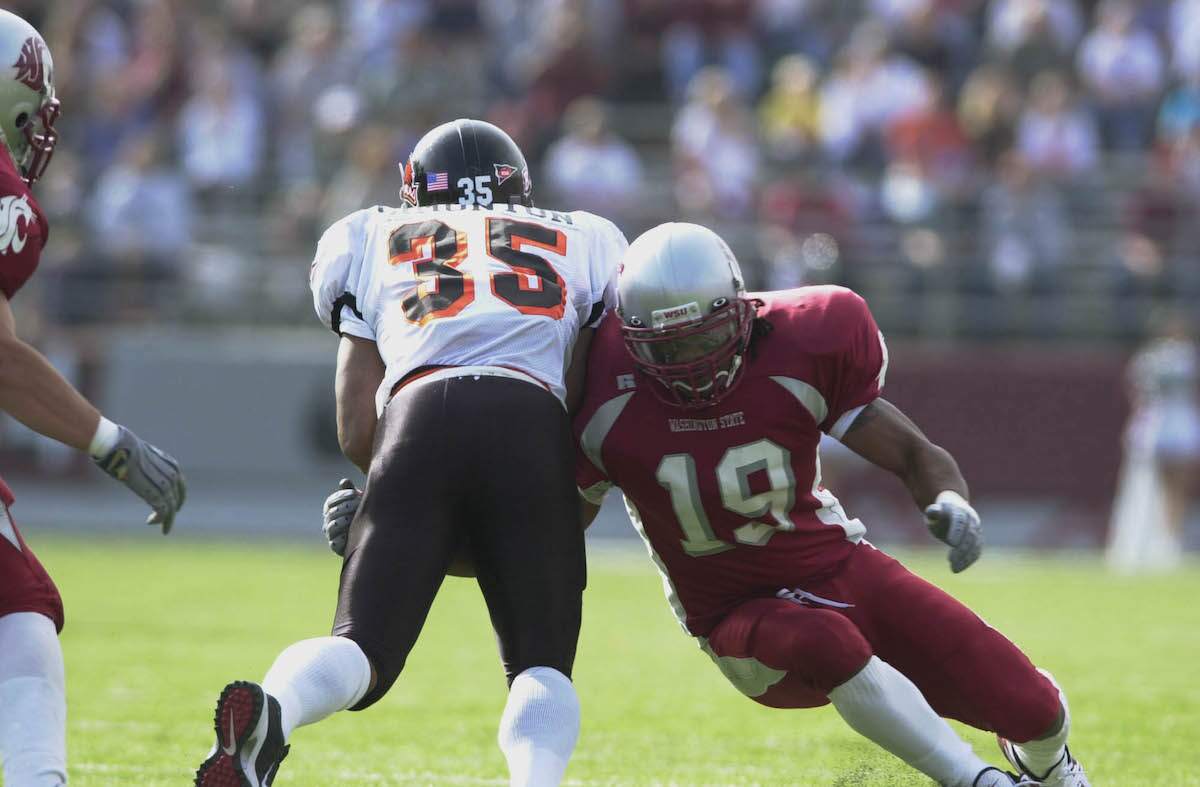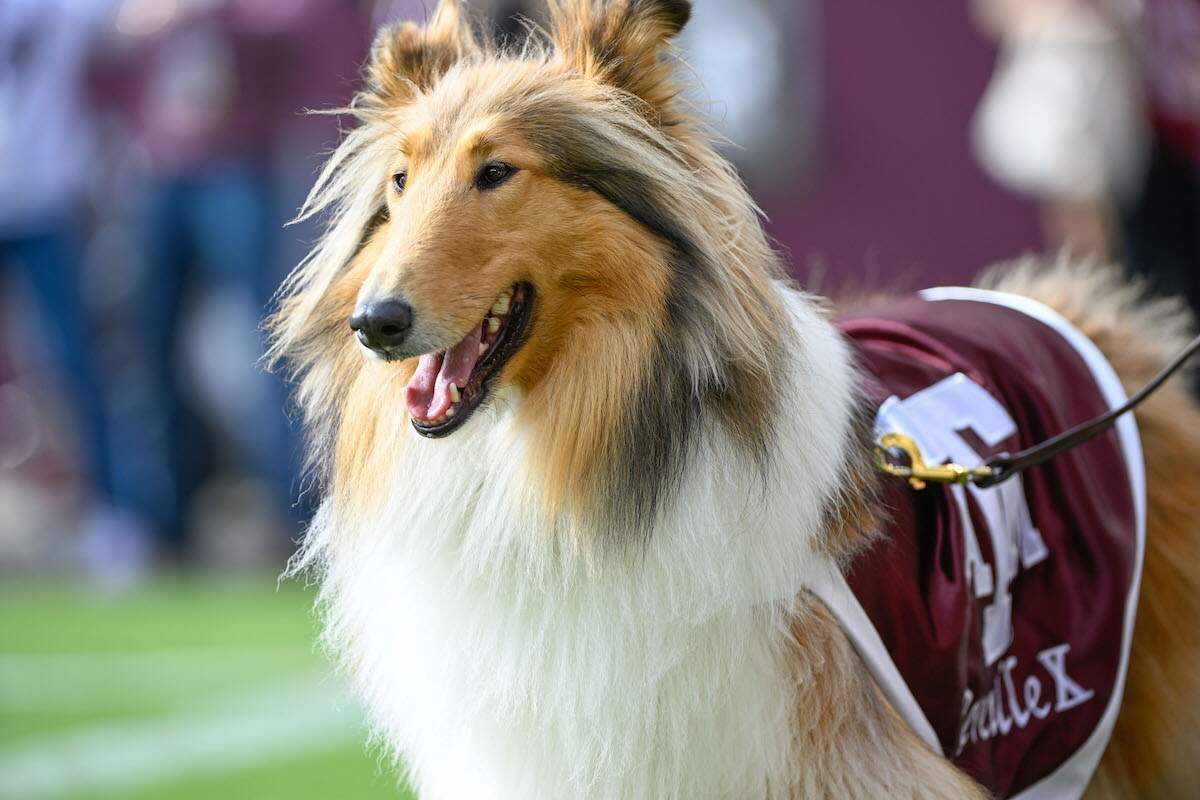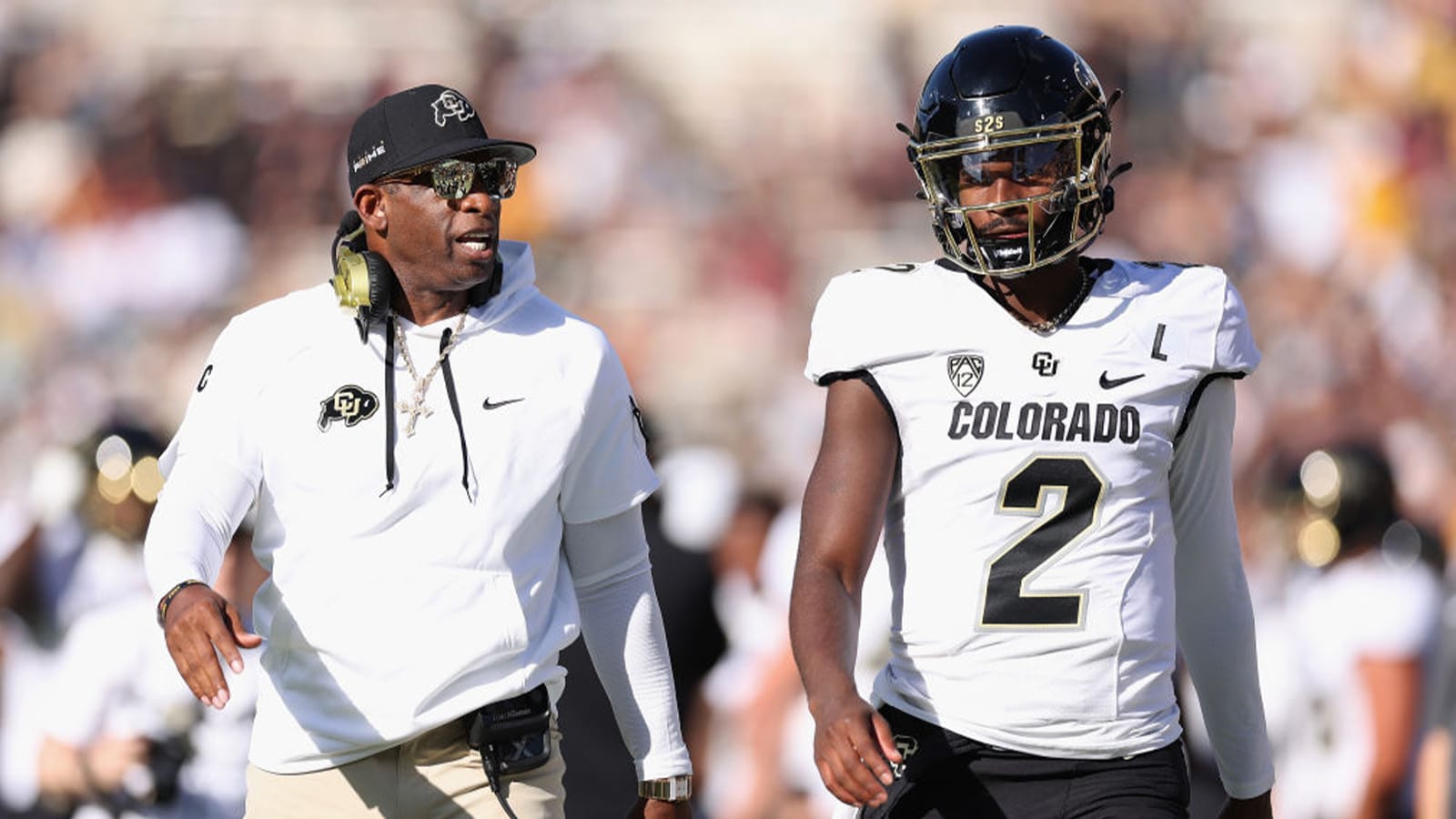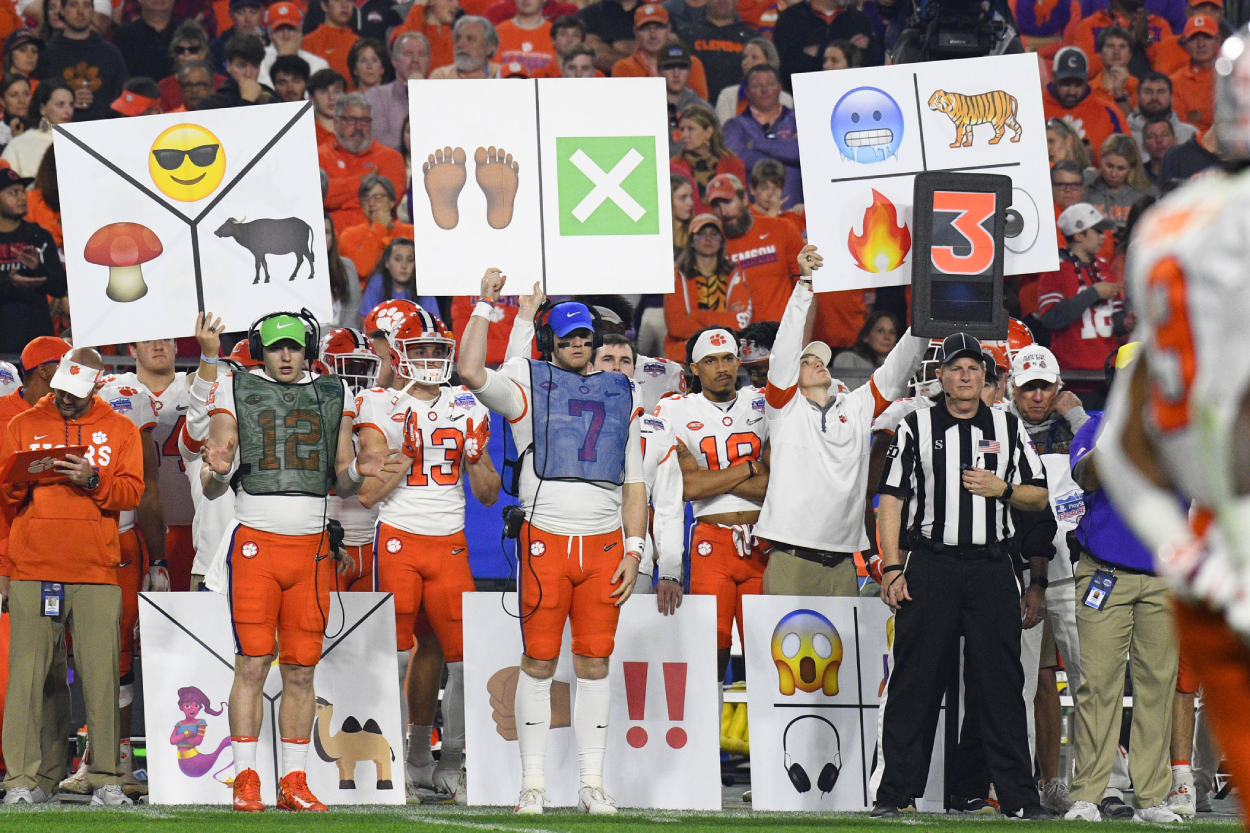
Why Do College Football Teams Hold up Signs for the Offense?
One of the most impactful distinctions between the NFL and college football is the way coaches communicate play calls. In the NFL, quarterbacks can receive play calls from their coach through a special radio inside of their helmet. In college football, meanwhile, coaches must call their plays from the sidelines.
Traditionally, quarterbacks wore wrist cards — essentially cheat sheets, which allowed them to decode a coach’s sideline instructions. But with the rise of no-huddle offenses, teams began switching to a more expedient option: symbol-laden sign cards.
The no-huddle offense
As its name implies, the no-huddle offense involves the elimination of the huddle between plays. This strategy is often used in conjunction with a hurry-up offense, in which a team snaps the ball as quickly as possible in an attempt to catch their defenders off guard and wearing them down. But the no-huddle offense doesn’t always involve snapping the ball more quickly.
On the contrary, no-huddle offenses derive their power from the mere threat of a quick snap — whether or not it actually happens. Because the defending team doesn’t know when the play will be initiated, it becomes much harder to substitute players and communicate about their defensive strategy.
Depending on how the defense aligns itself, a quarterback using the no-huddle approach also has the option of calling an audible and changing the play to capitalize on a perceived weakness.
The quarterback may also look to the sidelines, where a coach will relay a stronger attack strategy. In short, the no-huddle offense allows a team to make one or more strategic changes depending on the defensive alignment.
The challenge of a no-huddle offense
For all of its effectiveness, the no-huddle offense also presents a number of challenges. One of the most significant involves the method of communication between coaches and quarterback. As mentioned above, before college football got caught up in the no-huddle craze, quarterbacks used wrist cards to decode their coach’s play calls — whether issued through words, or hand signals, or signs.
The problem is that decoding a play call with a wrist card can be a time-consuming task. According to Eleven Warriors, some wrist cards contain as many as 84 different plays, meaning a quarterback has to use precious time to find the appropriate play on their card.
At that point, the quarterback must then communicate the play to the other players. Alternately, multiple players might wear wrist cards in order to decode the play independently.
Either way, the time involved in using wrist cards makes that approach virtually incompatible with today’s fast-paced no-huddle offense. Coaches needed to find a faster way to communicate their offensive strategies — one that didn’t involve plays huddling up between plays.
The use of signs to call plays in college football
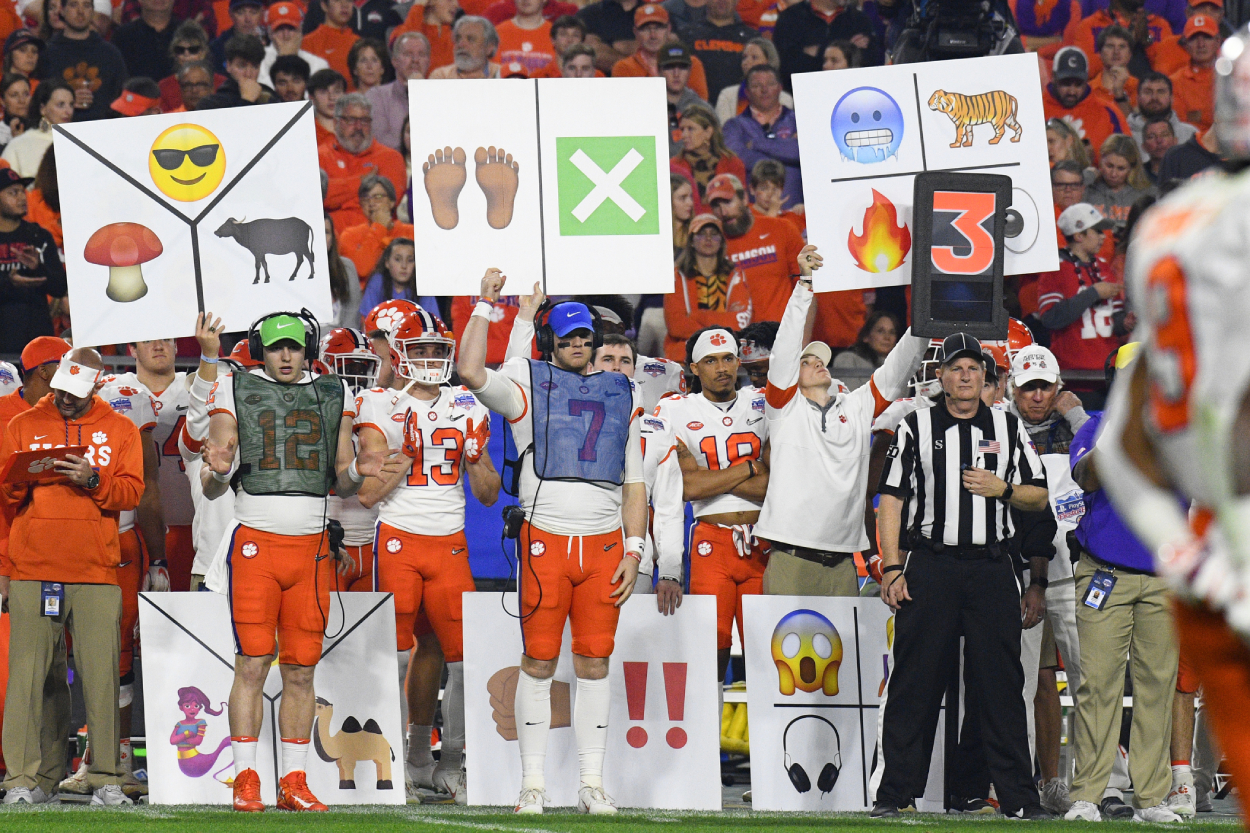
The modern no-huddle offense was introduced about 10 years ago by Chip Kelly, then the head coach of the Oregon Ducks. In order to speed up the play call process, Kelly also developed a new form of communication, one that involved large signs held up by coaches on the sideline.
These signs contain combinations of words, symbols, and pictures — everything from the Crying Jordan meme, to popular video game characters, or Hollywood celebrities. To fans, and more importantly to opposing teams, these cards appear completely random.
Yet players have been taught to associate each symbol with a specific assignment, a process that involves tedious memorization.
Still, when implemented correctly, play call signs drastically speed up communication time, thus allowing coaching staffs to read and react to defenses in real-time. Meanwhile, fans have learned to love reading and trying to decode sign symbols whenever they appear during a broadcast.
